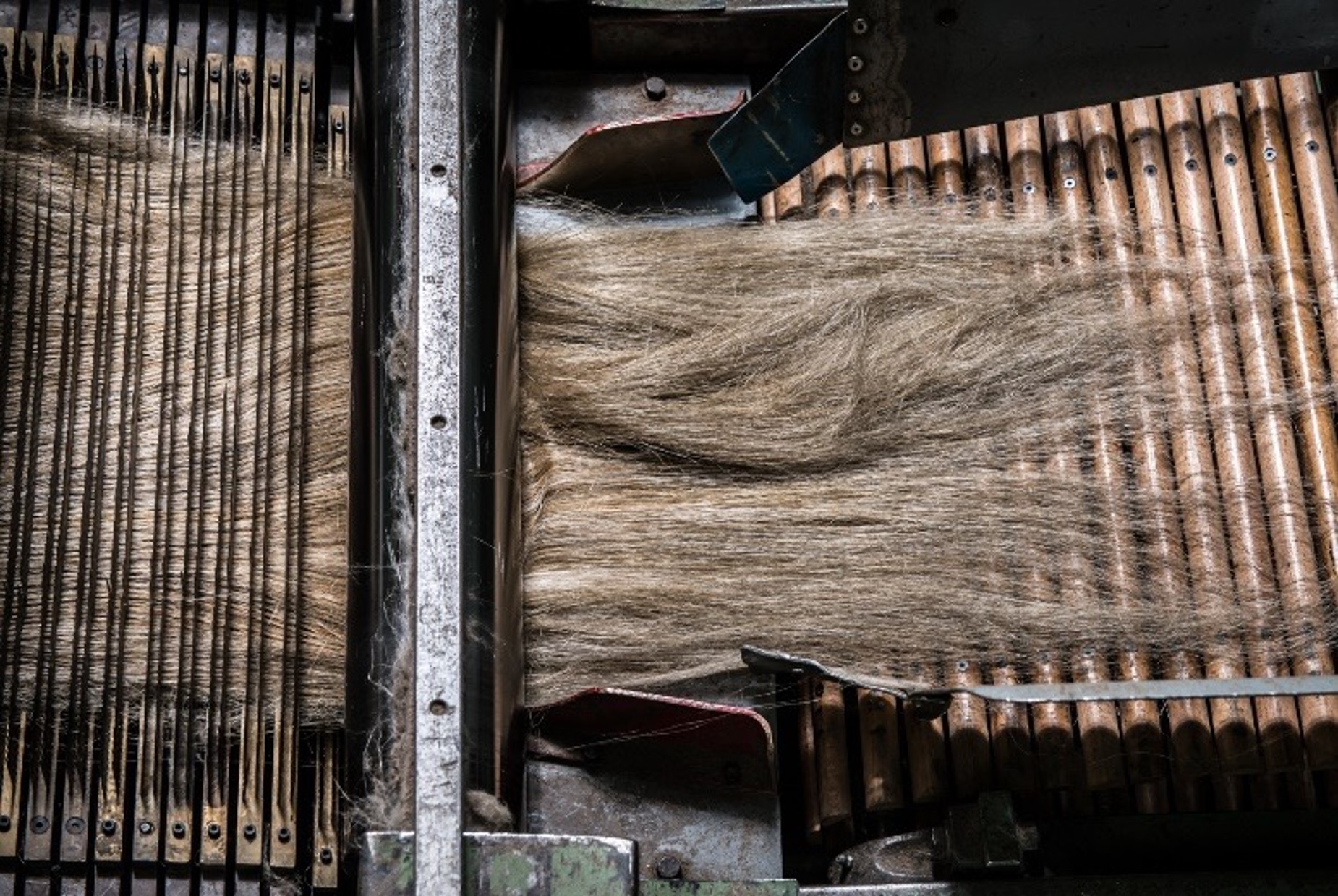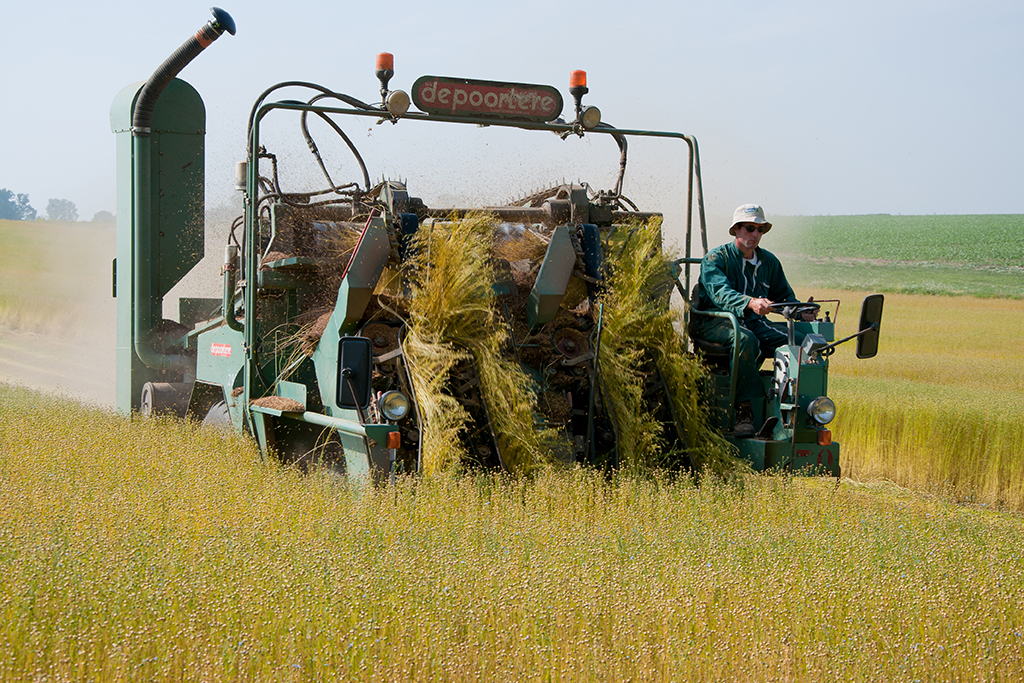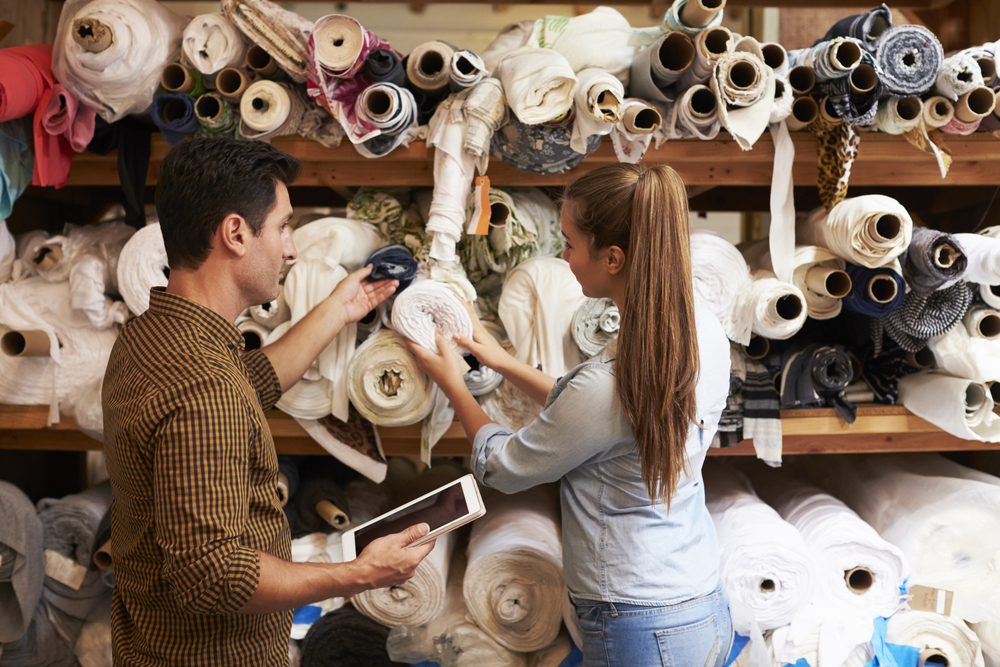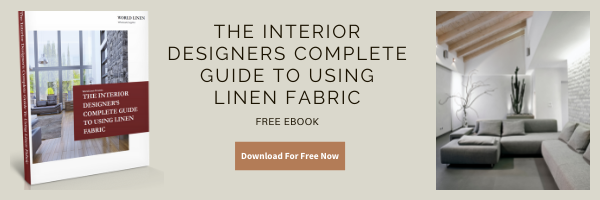If you’re searching for the right fabric that will take your project to the next level, linen fabric could be the perfect fit.
What is linen fabric? Linen fabric is a luxurious and durable textile used in the interior design industry because of its timeless look and comfortable feel. Linen fabric is constructed using fibers sourced from the stems of flax plants. It is up to three times stronger than cotton and is known for its strength, breathability and high-end look.
But what makes linen fabric a top textile among designers goes beyond its lavish look and feel. Here are five qualities that make linen fabric a top choice in design today.
1. Linen Fabric Has A Rich History
 Perfected over generations, linen fabric’s rich history has helped make it the durable and luxurious textile that many know today.
Perfected over generations, linen fabric’s rich history has helped make it the durable and luxurious textile that many know today.
Yet despite its rich past, many do not realize just how far back that history extends. In fact, linen dates back thousands of years and is one of the oldest crops that civilizations have cultivated.
Perhaps one of the most famous uses of linen is the Shroud of Turin, a centuries-old piece of linen cloth that millions believe was used to wrap the crucified body of Jesus of Nazareth. Researchers have studied the cloth over the course of thousands of hours, making it the single most studied artifact in history.
In ancient Egypt, linen was used during the mummification process to wrap the bodies of those who had died. In the country of Georgia, archaeologists discovered flax fibers that they estimated to be more than 30,000 years old. The fibers had been dyed bright colors.
And in ancient Mesopotamia, linen was an elite fabric, reserved for those who were considered to be of higher class. By around 3000 BC, historians say the Mesopotamian culture had domesticated the flax plant because it was relatively easy to take the flax plant’s stem fibers and spin them into yarn. This yarn was then used to create a variety of products, from clothing to rope.
There is also written evidence of the use of linen found on Linear B tablets from Pylos, Greece. The Mycenaean Greeks used these writing tablets as documentation, and the oldest of these discovered tablets date back to 1450 BC.
Today, farmland alongside the English Channel in Europe is home to many of the flax plants that are used to create this textile. For many generations, tending to flax plant fields along with the coastal communities of France, the Netherlands and Belgium have been a way of life for the farmers who live in the region.
This rich history of flax production has afforded farmers and manufacturers the opportunity to perfect the growing of flax and the construction of linen fabric. It’s no surprise then that this ancient fabric is still widely used today to create upholstery, window treatments, table decor, slipcovers and more.
While modern-day machinery now plays a larger role in processing the flax fibers to create a more efficient system for processing, the intricate process of growing flax and crafting linen remains constant today. This has ensured the linen fabric you use for your project is of the highest quality.
2. Sustainability Is Maximized
 The flax plant growing process makes linen fabric one of the most sustainable textiles available. That’s because very little water is required. Farmers do not need to irrigate or fertilize during the growing process either, and flax typically requires little to no pesticides, herbicides or fungicides.
The flax plant growing process makes linen fabric one of the most sustainable textiles available. That’s because very little water is required. Farmers do not need to irrigate or fertilize during the growing process either, and flax typically requires little to no pesticides, herbicides or fungicides.
Each year, between mid-March and mid-April, the sowing of the flax used to construct linen fabric takes place. Flax is grown according to a crop rotation method, with the rotation renewed every six to seven years. This regenerates the soil for succeeding crops, such as beets, wheat and potatoes.
Today, farmers can choose among the 20 or so varieties that are available, which helps farmers improve yields through plot-specific sowing. Around mid-June, the flax blooms with nearly 80 to 100 flowers per stem. About five weeks later, the pulling process occurs, which preserves the length of the fibers contained within the stem (versus cutting).
When flax is turned into linen, very little is wasted. Parts of the flax plant that are not used for constructing linen can be used for other purposes. For example, part of the flax plant can be used for producing oil, and flax seeds can be used for consumption.
Beyond the flax growing process, linen itself is sustainable as well. When a piece of linen is discarded, the fabric is biodegradable.
For companies that value and love sustainable practices, linen fabric can be a great choice. This can also be a point of promotion to customers who are looking for sustainable products for their homes or offices.
3. Linen Fabric Is Easy To Care For
 Customers today want a product that is both easy to care for and luxurious in appearance and feel. Linen fabric offers both, making it a popular choice among product manufacturers.
Customers today want a product that is both easy to care for and luxurious in appearance and feel. Linen fabric offers both, making it a popular choice among product manufacturers.
One of the best features of linen is that it does not require extra care. This is an important selling point for companies, especially those that produce products like upholstery, window treatments and table decor.
While this type of fabric can be hand-washed or dry-cleaned using professional services, it can easily be cleaned and dried in an individual’s washing machine and dryer as well.
There are a few tips that should be followed, such as avoiding hot water and heat since this can cause linen fabric to shrink. In general, most of the tips are common sense, such as never twist or scrub the fabric, and avoid bleaching since it can discolor the fabric.
Our article, How To Wash Linen, outlines some of the various washing and drying methods you can use when maintaining linen fabric. The best news, however, is that linen actually gets softer and improves as it ages. So as long as basic cleaning tips are followed, furniture and other products constructed with linen will stay fresh longer.
4. Health Benefits Are Abundant
Linen fabric is a top choice for the many health benefits it provides as well, such as:
- Linen fabric is moisture-resistant. Linen can absorb dampness up to 20% without even feeling wet. And, that moisture resistance helps protect the material against bacterial growth, which can occur when there is hidden dampness.
- Linen fabric is hypoallergenic. Because linen is considered a natural fiber, it is friendly to a person’s skin and is perfect for allergy sufferers.
- Linen fabric is breathable. This makes it a great choice in any climate. Linen keeps you cool in the summer, but also has the ability to provide warmth in the winter. In any climate, the breathability of linen helps provide a better night’s sleep. That’s because the breathability of fabric offers better regulation of your body temperature.
Because of these health benefits above, many designers and manufacturers choose linen for products such as upholstery, slipcovers and bedding.
5. Linen Fabric Is Available In Wholesale
 For projects that require a large quantity of fabric, many designers and manufacturers turn to wholesale suppliers. If you’re eyeing linen fabric for your project, the good news is that linen fabric is available from some wholesale suppliers.
For projects that require a large quantity of fabric, many designers and manufacturers turn to wholesale suppliers. If you’re eyeing linen fabric for your project, the good news is that linen fabric is available from some wholesale suppliers.
Wholesale suppliers, which typically are the fabric companies, can offer the best prices or quantities you need. Working with a supplier to get the linen fabric you need for your project can save you money in the long run, since distributors will mark up prices before selling the fabric to you.
Sometimes a designer may purchase fabric from a distributor, despite the cost mark-up, because some wholesalers set minimum quantity requirements. So it’s important to check with the wholesale supplier you are considering working with to determine whether there are any minimum quantity requirements for the linen fabric you purchase.
What else should you look for when choosing a wholesale supplier?
- Linen fabric that is delivered in a timely manner
- Customization opportunities
- Product knowledge to ensure linen fabric is the right choice for your project
- Knowledge of where the flax used to create the linen fabric is sourced
- Availability to meet your deadline
Our article, Are Linen Fabric Wholesale Suppliers Right For Me?, offers a few other tips to keep in mind when shopping for the best linen fabric wholesale supplier so that you can ensure your project is successful.





